I tested the new Surface Laptop Go 3 and here’s why it’s hard to recommend
Very little has changed from generation to generation with the Surface Laptop Go
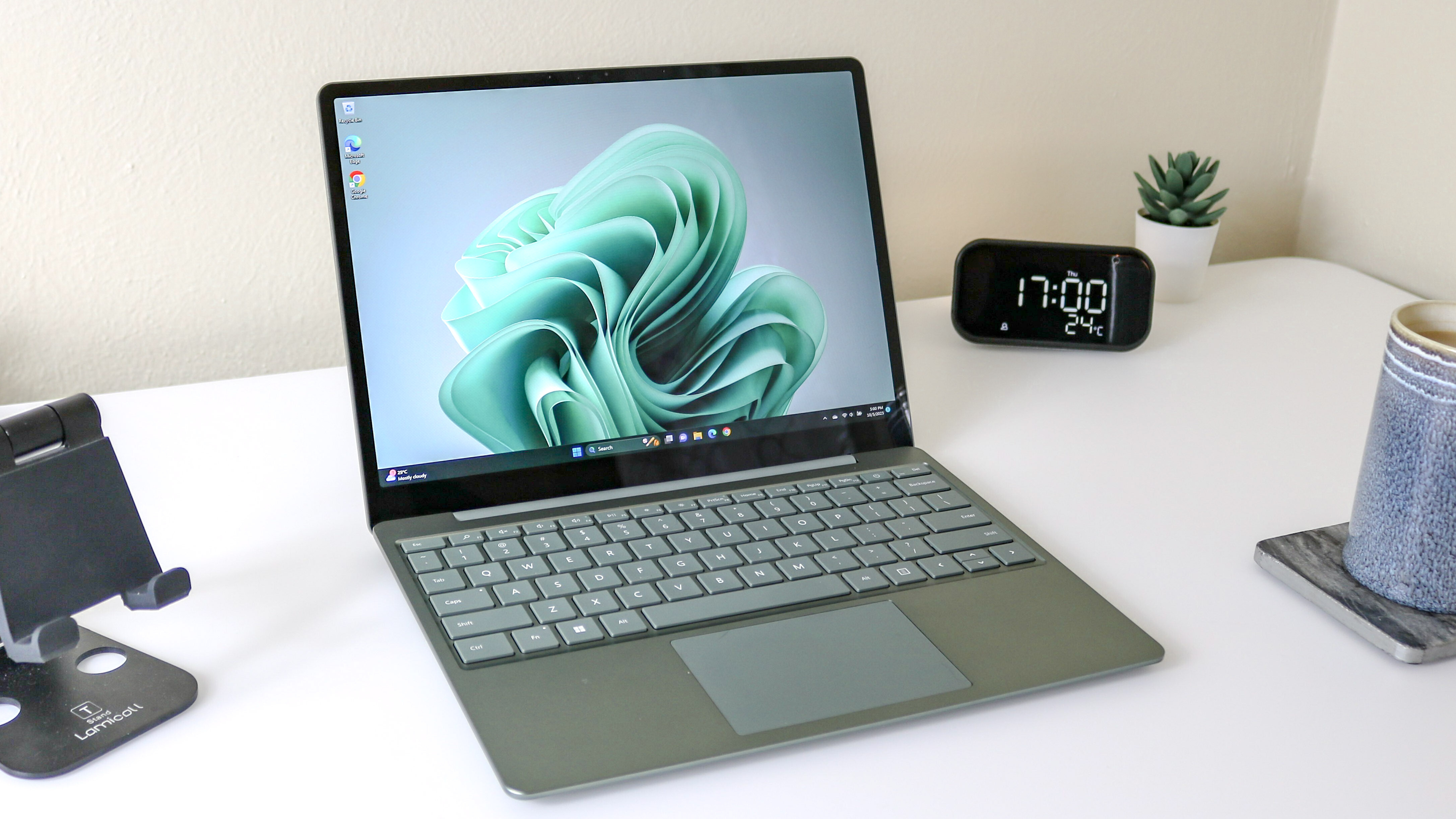
Ever since Steve Jobs pulled the original MacBook Air out of a manilla envelope, the best laptops have been getting thinner and thinner.
While I definitely don’t miss the clunky laptops of the late 2000s, the thinner and lighter trend has gotten out of hand but you can still have a relatively thin and light laptop without sacrificing ports or power.
Even though I primarily use a desktop PC for the majority of my work while at home, I can certainly see the appeal of a thin and lightweight laptop that you can easily throw in a bag and bring with you everywhere. In fact, I had hoped to do just this when I first got my work-issued Surface Laptop Go.
As a power user that often has dozens of tabs open in two browser windows stretched across my ultrawide monitor, the sheer computing power just wasn’t there with Microsoft’s first more-affordable Surface laptop. I recently had a chance to review the company’s new Surface Laptop Go 3 and while I missed out on the second generation, I had hoped things would be different this time around.
Unfortunately, not enough has really changed between the different generations of the Surface Laptop Go. There have been some upgrades, but not they aren’t noticeable enough to justify the $200 price increase over its predecessor. If you’re considering picking up a Surface Laptop Go 3 to work from anywhere, here’s why you might want to think twice before you do.
A tale of two Surfaces
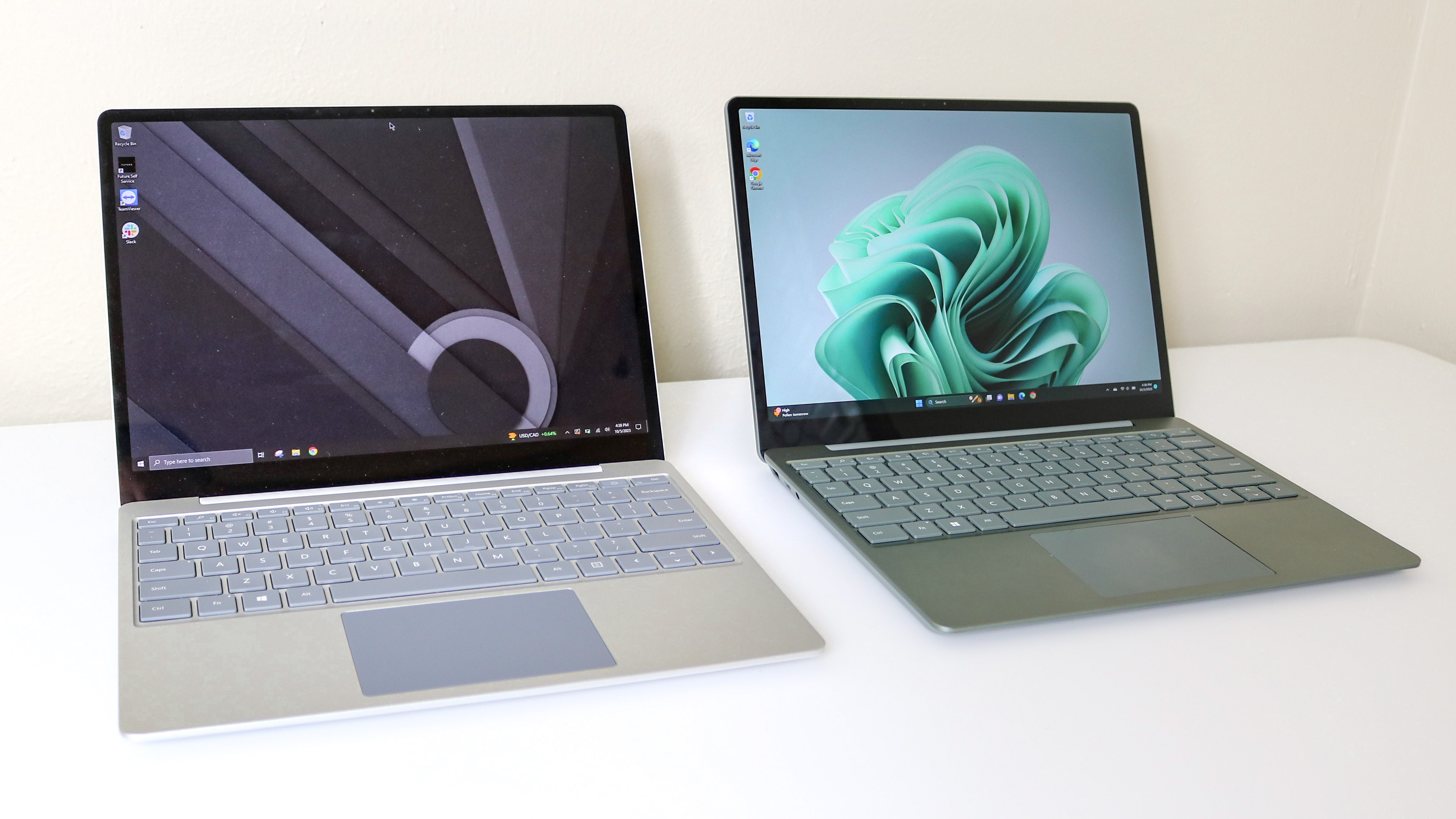
On the right side is my original Surface Laptop Go and on the left is the new Surface Laptop Go 3 Microsoft sent over for review. While the display is certainly brighter on the new version, they’re nearly identical in terms of design — for better or worse.
The Surface Go 3's 'new' processor is technically a year old already as 13th Gen Intel chips are now available.
The new Surface Laptop Go 3 also sports a 12.4-inch PixelSense touchscreen with a 3:2 aspect ratio and a resolution that’s under 1080p (1536x1024). Both laptops are under three pounds — 2.45 pounds for the original, 2.49 pounds for the newer model — and feature an aluminum chassis which helps make them so lightweight.
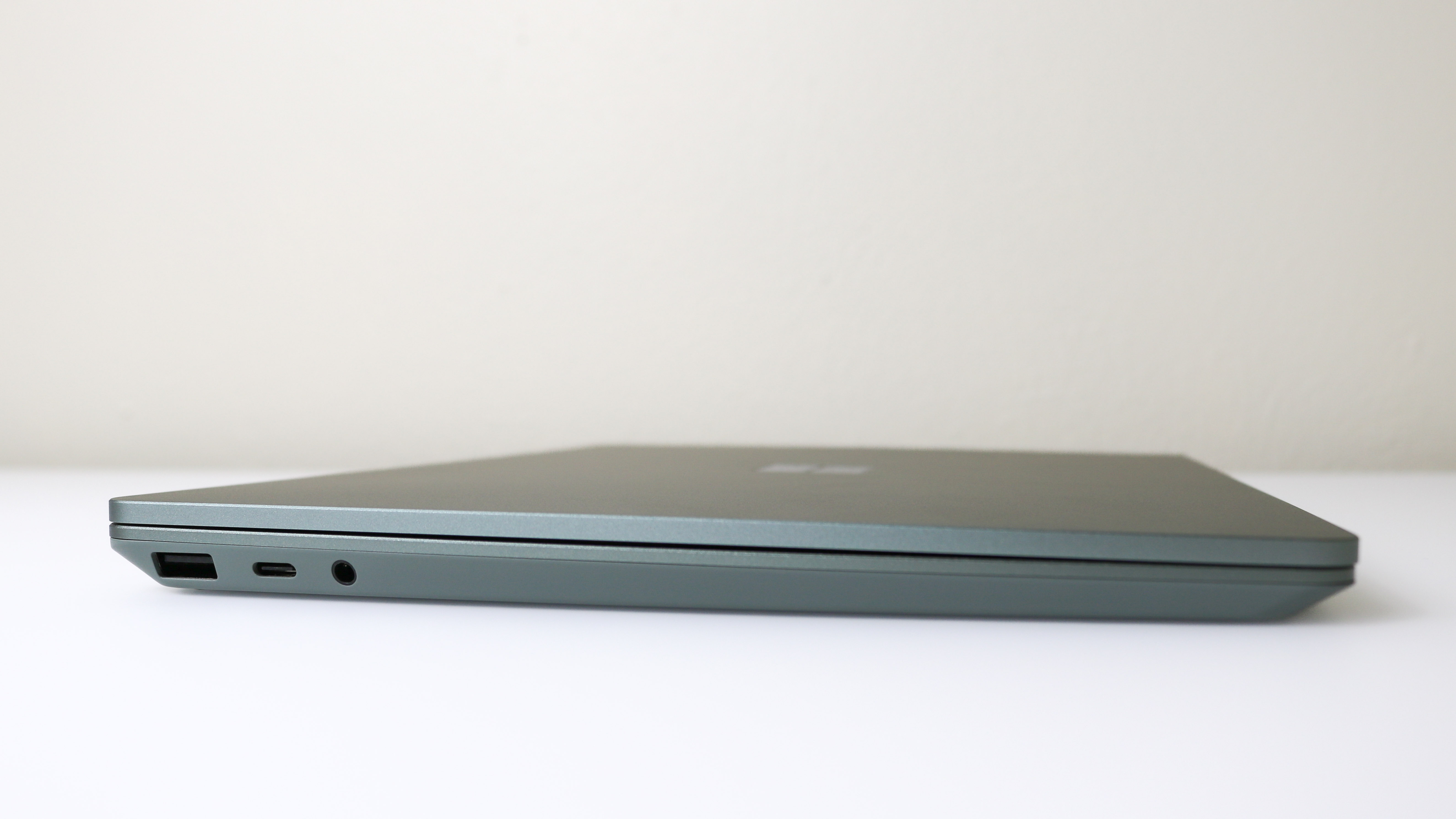
One thing that hasn’t changed between the two are the ports. There’s a USB-A and a USB-C port along with a 3.5mm audio jack on the left side and Microsoft’s own Surface Connect port on the right side. The full-size USB port on the left means you don’t need to lug around a USB hub with you but I would have loved to see another USB-C port on the right or even the addition of a microSD card slot.
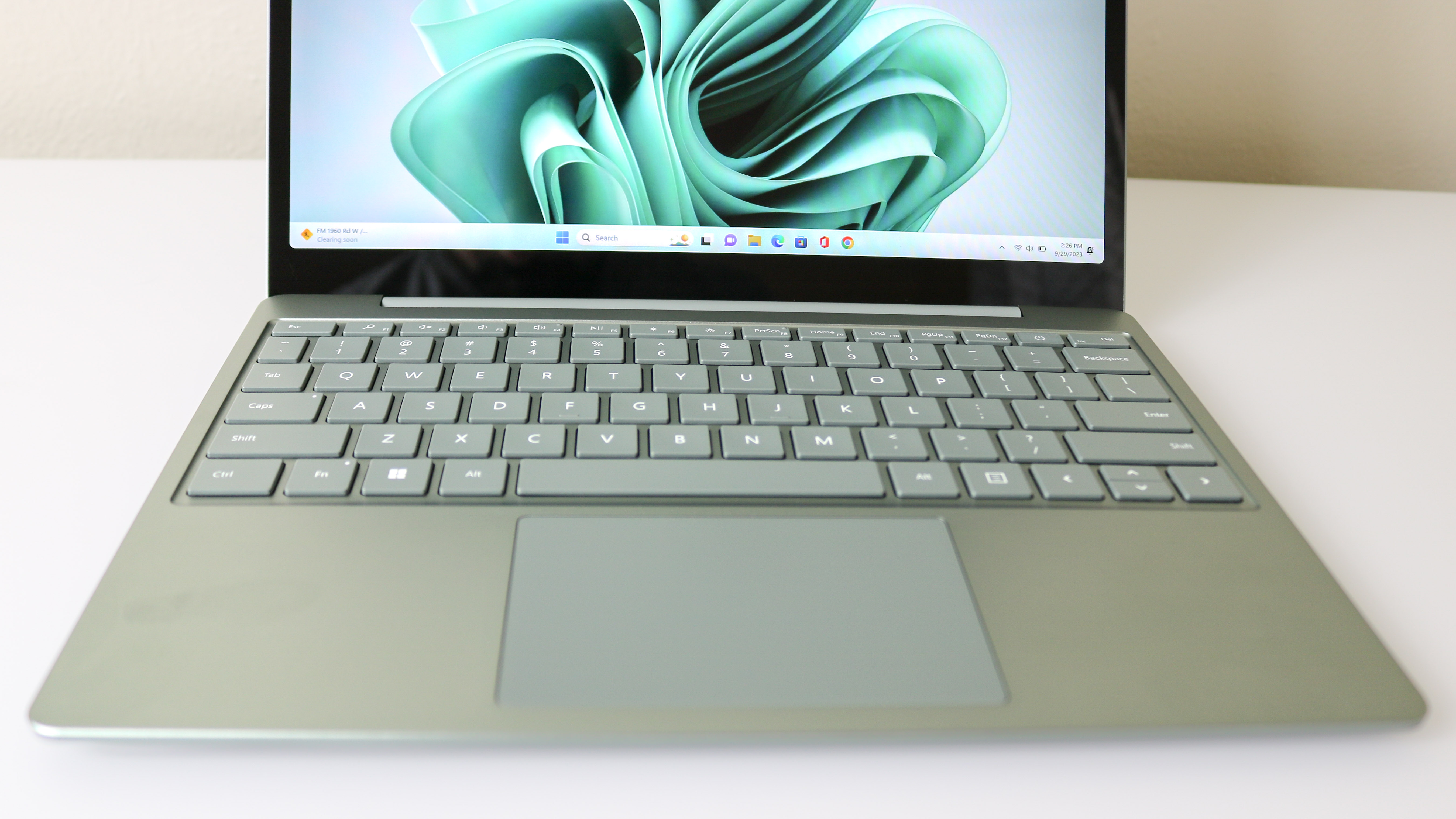
The keyboard remains largely unchanged as well but this is actually a good thing as it’s comfortable to type on with bouncy keys. The trackpad is a bit grippier this time around but it’s still very smooth to drag your fingers across. One nice addition with the Surface Laptop Go 3 is that its fingerprint reader in the power key that used to be an optional add-on is now standard. Regardless of whether you pick up the version with 8GB or 16GB of RAM, you’ll be able to quickly unlock your laptop using biometrics. This also works with Windows Hello, Microsoft’s built-in password manager.
It’s worth noting that Microsoft has done away with the cheapest version of the Surface Laptop Go with 4GB of RAM and the company has now made 8GB of RAM the starting point. This is the reason behind the $200 price increase along with the new 12th Gen Intel Core i5 processor. However, this ‘new’ processor is technically a year old already as 13th Gen Intel chips are now available. This was likely a cost-cutting measure on Microsoft’s part but what it saved on the processor didn’t find its way back into the Surface Laptop Go 3. A higher resolution display or even a backlit keyboard would go a long way to help justify the price increase in addition to just more RAM and a newer processor.
A downside that’s hard to gloss over
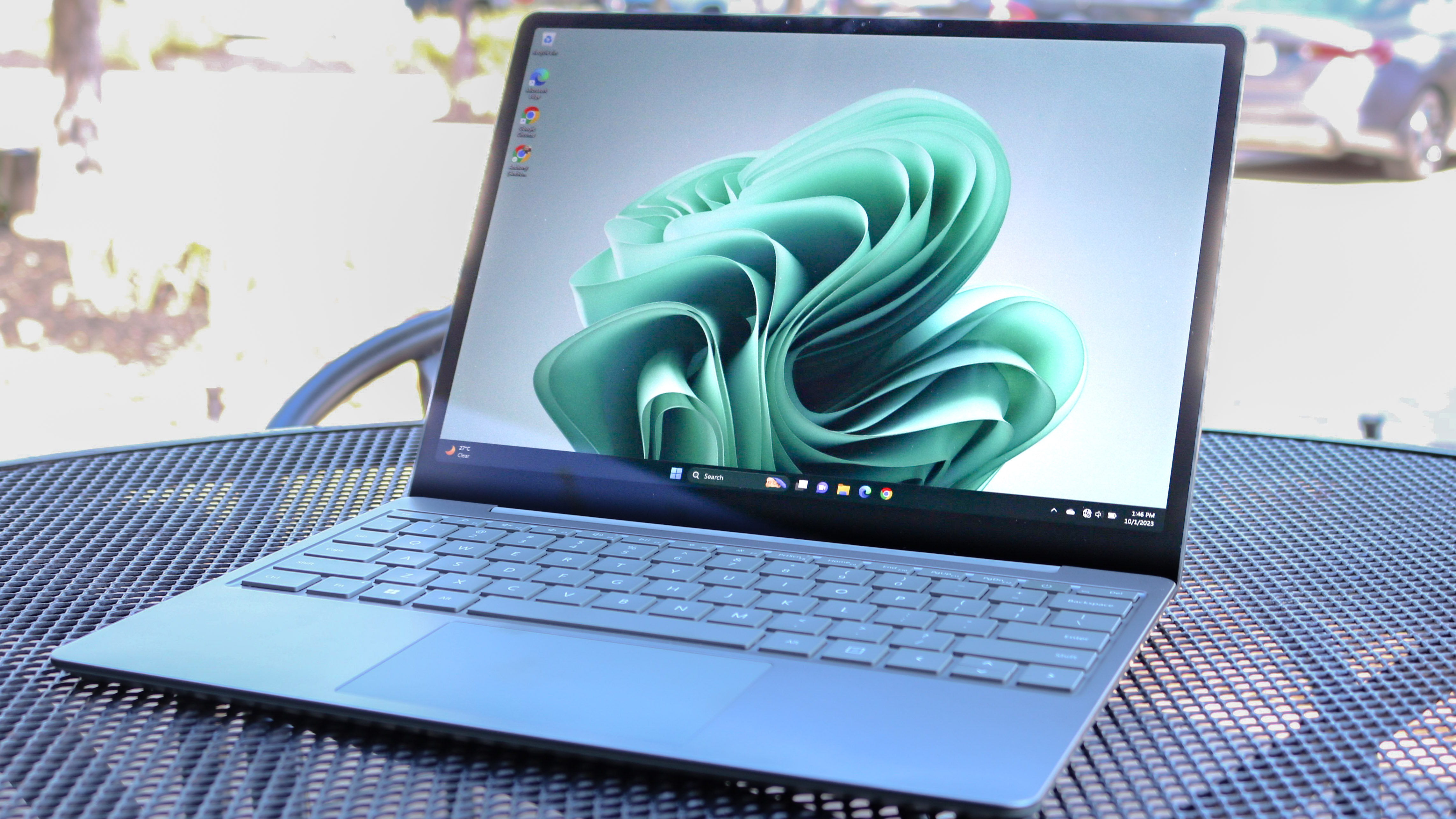
As part of my review process, I’ve spent the past week using the Surface Laptop Go 3 both indoors and outdoors. Like the Surface Laptop 5 and the other surface devices before it, this new model also has a glossy screen. While Microsoft increased the display’s brightness slightly from the first to the second generation of the Surface Laptop Go, this new model hasn’t seen any changes and maxes out at 320 nits of brightness.
To put this in perspective, the MacBook Air M2 achieved an average of 473.6 nits of brightness and hit 498 nits with HDR content in our tests while the Surface Laptop Go 3 peaked at 331 nits in the center of the display during testing.
When combined with its glossy screen, 320 nits just isn’t bright enough to reliably use the Surface Laptop Go 3 outdoors. It’s hard to tell in the edited image above, but I strained to read what was on the screen while working from a coffee shop. For a laptop with go in its name, not being able to use it outdoors really holds back the device’s potential.
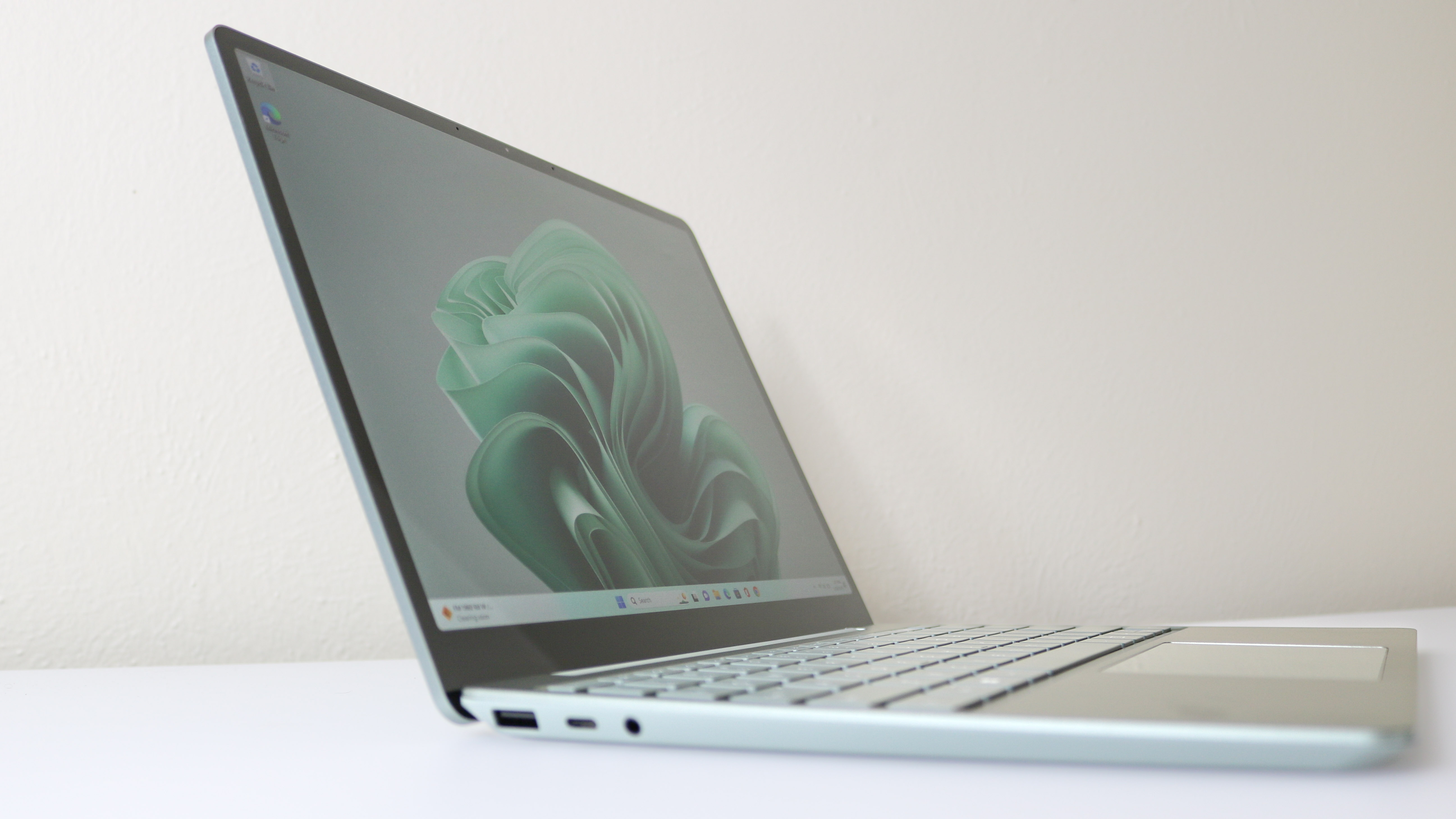
I encountered similar issues when using the Surface Laptop Go 3 indoors with natural sunlight pouring in through my windows. The glare was very distracting when trying to watch content from the best streaming services. In fact, during darker scenes, my own reflection stood out more than what was going on in the TV shows and movies I watched on the Surface Laptop Go 3.
I also tested out the device in a dimly lit room with the curtains drawn and this made a big difference. However, for an ultraportable laptop designed to let you work from anywhere, not being able to reliably use it outside or in a room with a lot of light really holds the Surface Laptop Go 3 back. You could pick up a matte screen protector for it but this adds to the price and will likely make using its touchscreen feel a bit strange.
Extremely portable but not that powerful
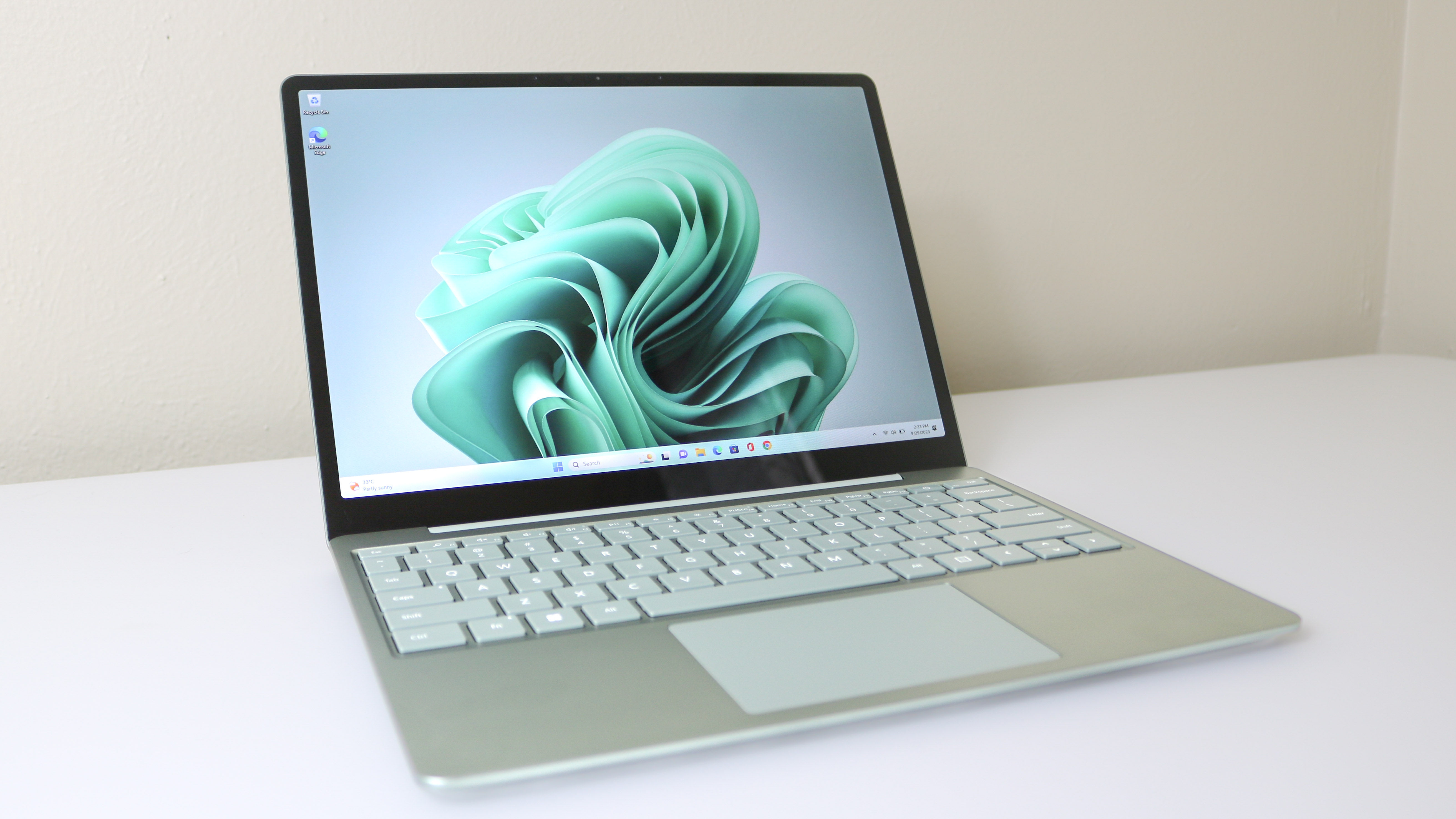
So what was it like trying to use the Surface Laptop Go 3 as my main work computer for a week? It was a lot better than doing so with my original Surface Laptop Go but I still noticed slowdowns when trying to multitask and the fan kicked on unexpectedly on several occasions.
For instance, when I was on a video call with my colleagues, I tried using two browser windows side by side with four or five tabs open in each one. The Surface Laptop Go 3 crawled to a standstill and left me reaching for my Lenovo P11 Gen 2 instead.
Cloud gaming performance fared much better and using Xbox Game Pass Ultimate to play a few games worked as well as I could have hoped. However, I also wanted to see how the device’s built-in Intel Iris Xe graphics could handle some less-intensive titles locally. When I went to install Rocket League though, just downloading the game caused the Surface Laptop Go 3’s fans to start spinning up.
As someone that tests out both the best Wi-Fi routers and the best mesh Wi-Fi systems, the Surface Laptop Go 3’s Wi-Fi also was a disappointment. Instead of outfitting the device with the newer Wi-Fi 6E standard, this one still ships with Wi-Fi 6. With a less powerful device that leverages the cloud to offload some of its workloads, I had hoped Microsoft would give it a bit of a Wi-Fi boost but like other aspects of this laptop, it too has stayed the same across generations.
A decent secondary device but by no means a workhorse
The Surface Laptop Go 3 won’t replace a desktop PC or even a slightly thicker laptop when it comes to getting work done. However, at 0.62 inches thin and with a weight of 2.49 pounds, it’s certainly a good laptop to throw in a bag and bring with you. The glossy screen makes it less than ideal to use outdoors but if you prefer to sit inside a coffee shop, you shouldn’t have any problems.
Like with the best Chromebooks, the Surface Laptop Go 3 is more of a secondary device for computing on the go. With one of the best Mini PCs or even a desktop with a smaller form factor in your house or even your dorm room, you have a laptop that you can take with you to do some light work tasks that you just couldn’t pull off on your phone.
It’s a shame that the Surface Laptop Go 3’s display didn’t get a bump in resolution and a backlit keyboard would have been a nice addition too. If you want what possibly might be one of the thinnest Windows laptops for traveling and can't live with its limitations, there are better options like the Samsung Galaxy Book 2 Pro 360. And if you're open to macOS, get the MacBook Air M2 instead.
More from Tom's Guide
Sign up to get the BEST of Tom's Guide direct to your inbox.
Get instant access to breaking news, the hottest reviews, great deals and helpful tips.

Anthony Spadafora is the managing editor for security and home office furniture at Tom’s Guide where he covers everything from data breaches to password managers and the best way to cover your whole home or business with Wi-Fi. He also reviews standing desks, office chairs and other home office accessories with a penchant for building desk setups. Before joining the team, Anthony wrote for ITProPortal while living in Korea and later for TechRadar Pro after moving back to the US. Based in Houston, Texas, when he’s not writing Anthony can be found tinkering with PCs and game consoles, managing cables and upgrading his smart home.
